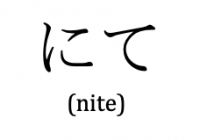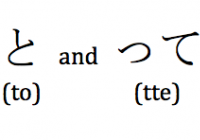Literary Japanese: shifting around the order of topics
In English, language used in literature can be quite different to that used in everyday conversation, with variations in vocabulary, sentence length, and word order, among other things. For example, a simple phrase like “A captain was I!” has a tone that marks it as literary, and generally wouldn’t be used in spoken language unless… Read More »






